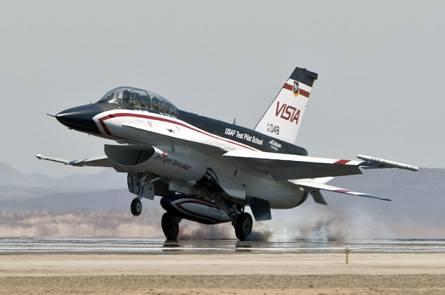Lockheed Martin billed the autonomous landing of an F-16 as evidence of its preparations for developing unmanned combat air vehicles, but the demonstration could be a factor in a more near-term contract.
The US Air Force plans to converts dozens of retired F-16s into aerial targets, replacing the dwindling supply QF-4 drones by the middle of the next decade. Showing the ability to autonomously land the F-16 is a critical requirement to win the QF-16 conversion contract.
 |
|---|
© Lockheed Martin |
The QF-4 is also programmed to land autonomously, but the USAF also operated a ground-based manual back-up for emergencies. The QF-16 contract removes the requirement for a manual back-up, making reliability of the autonomous landing feature a key competitive attribute.
In a briefing charted dated September, USAF officials described a "highly reliable QF-16 auto landing capability" as "critical to the programme's success".
A Lockheed spokeswoman acknowledged "there isn't a specific UCAV project in mind". However, Lockheed "is looking at how these algorithms might support other initiatives including the Air Force's upcoming QF-16 initiative".
The USAF plans to issue a request for proposals for the QF-16 contract in the third quarter of fiscal 2009, followed by contract award in the first quarter of FY10.
BAE Systems, the incumbent QF-4 prime contractor, is also likely to compete for the QF-16 contract.
Lockheed's Skunk Works developed the autoland sequence to be initiated during flight by an onboard safety pilot. An onboard computer guides the F-16 through the landing sequence, Lockheed says, using algorithms to control attitude, glide slope, airspeed and descent rates.
For the demonstration, Lockheed used the USAF Test Pilot School's variable stability in-flight simulator test aircraft (VISTA) F-16, and Calspan Corp flight test safety pilots.
Source: Flight International























